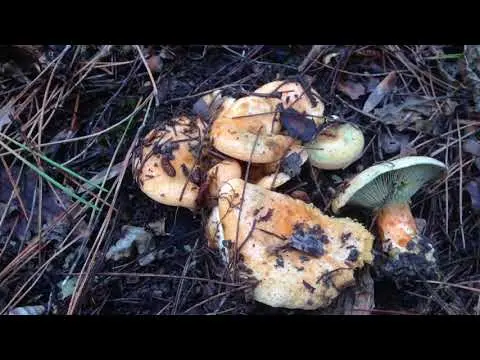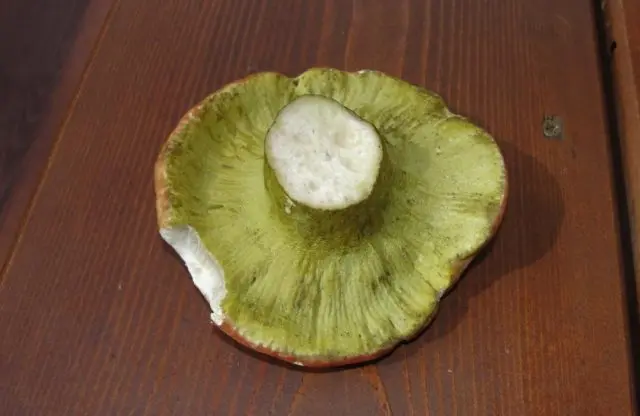Contents
In late summer and early autumn, people begin to actively collect mushrooms that grow in the forest area. Out of habit, everyone collects russula, chanterelles, boletus mushrooms and champignons. But some on the way there are nondescript specimens that are called green hypomyces.
What does hypomyces green look like?
This type of mycoparasite is called pekiella yellow-green or hypomyces. It belongs to the inedible category. Most often it parasitizes on russula and mushrooms. They begin to appear in mid-June and continue their activity until the end of September.
Has several distinctive features. The parasite mainly appears on the plates of the host fungus. Gradually covers it, which leads to reduction. The affected aerial part is completely penetrated by the mycelium of the parasite. If you cut the fruiting body, then inside you can find rounded white cavities.
The size of the fruiting body does not exceed 0,3 mm. Characterized by a slight mushroom smell. The parasite has a spherical body with a blunt tip. Its surface is smooth. On the outside, the fruit is covered with a bloom of yellow or dark olive color. The white mycelium of the parasite completely infects the host. Over time, the fruit becomes hard.

Hypomyces begins to appear already in mid-June, as soon as the first above-ground parts of the fruiting body are formed.
At first it has a pale yellow or green color. Ignorant people will not notice significant changes.
Where does hypomyces green grow?
Mycoparasite spreads almost everywhere where white mushrooms, mushrooms or russula grow. Often it can be found in the forests of the Urals or Siberia. Often it is found not only in Our Country, but also in Kazakhstan. Remarkably, hypomyces can not be seen immediately. If it is just starting to develop, the fruiting body will have its usual shape and color.
Is it possible to eat hypomyces green
The question of the edibility of the affected fruit is rather controversial. Some argue that hypomyces can be eaten. Only after being infected by a parasite does the fungus acquire the taste of sea delicacies.
Others say that the use of affected fruiting bodies is impossible. They lose their presentation, and can cause damage to the body.

Most often, the mycoparasite hides under the cap, while the cut is not always visible changes
If the fruiting body is severely affected, then rounded cavities of a whitish or brownish hue can be observed inside.
Poisoning by this parasitic species has not been reported. But if you cook the mushroom incorrectly, this can lead to unpleasant symptoms.
This process is accompanied by:
- cramping abdominal pain;
- nausea;
- urge to vomit;
- diarrhea.
The first signs of poisoning may appear as early as 6-7 hours after eating infected russula. And their intensity will depend on how much the product was eaten.
Therefore, if a mushroom picker finds green fruits in the forest, it is better not to collect them so as not to risk your health.
Conclusion
Hypomyces green is considered a common type of fungus. There is still no clear information about its edibility. The green-colored parasite infects such well-known species as russula, saffron milk mushrooms and white fungus. Some people believe that it does not harm the human body, while it has an unusual taste of overseas delicacies, but a frightening look. Cases of poisoning by affected russula or mushrooms have not been identified.









